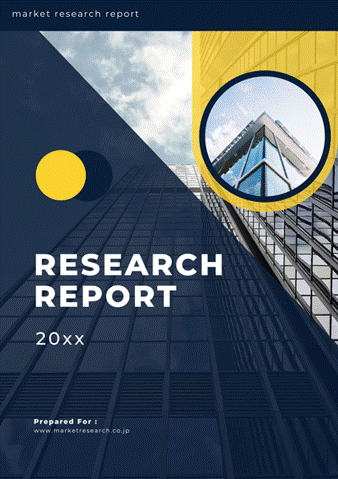 | • レポートコード:C-MOR-100366 • 出版社/出版日:Mordor Intelligence / 2019年8月 • レポート形態:英文、PDF、132ページ • 納品方法:Eメール(受注後2-3営業日) • 産業分類:農業 |
| Single User | ¥629,000 (USD4,250) | ▷ お問い合わせ |
| Multi User | ¥703,000 (USD4,750) | ▷ お問い合わせ |
| Site License | ¥888,000 (USD6,000) | ▷ お問い合わせ |
• お支払方法:銀行振込(納品後、ご請求書送付)
レポート概要
| 本調査レポートでは、殺虫剤の世界市場について調査・分析し、殺虫剤の世界市場規模、市場動向、市場環境分析、市場展望、セグメント別分析、地域別分析、関連企業情報など以下の構成でお届け致します。 |
Market Overview
The insecticides market was valued at USD 14.63 billion in 2018 and is expected to register a CAGR of 5.1% during the forecast period, 2019-2024.
The number of pests in different crops, across the world, is rising, and there is a tremendous increase in the number of insecticide-resistant pests.
Insecticides can be used to control a variety of pests; however, over time, they lose their effectiveness, as pests develop resistance, a significant decrease in sensitivity to a pesticide, which reduces the field performance of pesticides.
Reliance on insecticide-based pest management of insect pests often leads to the development of insecticide resistance.
Scope of the Report
All active ingredients that are used to control insect pests, including biological insecticides and antimicrobial insecticide, have been considered within the research scope. The market under study includes insecticides applied by owners or operators and commercial applicators, to farms and facilities that are involved in the production of raw agricultural commodities, fiber, mainly food, and tobacco. The market under study also includes crop and field applications, as well as non-crop and post-harvest use in agriculture.
Key Market Trends
Increasing Food Demand and Need for Increased Agricultural Productivity
According to FAO, the food demand in the United States is expected to increase by 50% to 90% by 2050. The world population is expected to grow by over a third, or 2.3 billion people, between 2009 and 2050. Many factors, from climate change to the outbreak of pests and lack of investment, make it challenging to produce enough food. The demand for food is expected to increase in the near future due to the increasing population, as well as rising income of individuals, in the United States. The percentage of the arable land area is falling in the United States, which indicates the need to increase agricultural productivity to meet the increasing demand of the US population, as well as of the countries that import from the United States. Owing to these trends, the market demand for food is expected to increase, thereby, increasing the demand for insecticides, globally.
Increasing Insecticide Consumption in the Asia-Pacific Region
Rise in the number of resistant pests, increasing food demand, and need for increased agricultural productivity are the major factors driving the insecticides market in the Asia-Pacific region. Farmers will need to increase production by increasing productivity and using pesticides to control the damage caused by pests. Without the use of crop protection products, such as insecticides, the overall food production may decline, as due to climate changes and pests, farmers are facing yield fluctuations by about 30%. Owing to the above reasons, Asia-Pacific is the largest market in terms of insecticide consumption.
Competitive Landscape
In the insecticides market, companies are adopting various strategies, such as product launches, partnerships, and acquisitions, to gain a larger share in the market. The global insecticides market is a largely consolidated market, with the top seven companies accounting for around 40% of the total market.
Reasons to Purchase this report:
The market estimate (ME) sheet in Excel format
Report customization as per the client’s requirements
3 months of analyst support
1 INTRODUCTION
1.1 Study Deliverables
1.2 Study Assumptions
1.3 Scope of the Study
2 RESEARCH METHODOLOGY
3 EXECUTIVE SUMMARY
4 MARKET DYNAMICS
4.1 Market Drivers
4.1.1 Rise in the Number of Resistant Pests
4.1.2 Increasing Food Demand and Need for Increased Agricultural Productivity
4.2 Market Restraints
4.2.1 Strict Regulations with Respect to Insecticide Usage
4.2.2 High Costs Associated with Developing New Products
4.3 Porter’s Five Forces Analysis
4.3.1 Bargaining Power of Suppliers
4.3.2 Bargaining Power of Buyers/Consumers
4.3.3 Threat of New Entrants
4.3.4 Threat from Substitute Products
4.3.5 Intensity of Competitive Rivalry
5 MARKET SEGMENTATION
5.1 By Origin
5.1.1 Synthetic Insecticide
5.1.2 Bio-insecticide
5.2 By Application
5.2.1 Grains and Cereals
5.2.2 Pulses and Oilseeds
5.2.3 Commercial Crops
5.2.4 Fruits and Vegetables
5.2.5 Turf and Ornamentals
5.2.6 Other Applications
5.3 By Insect Pest Type
5.3.1 Sucking Pest Insecticides
5.3.2 Biting and Chewing Pest Insecticides
5.4 Geography
5.4.1 North America
5.4.1.1 US
5.4.1.2 Canada
5.4.1.3 Mexico
5.4.1.4 Rest of North America
5.4.2 Europe
5.4.2.1 Germany
5.4.2.2 UK
5.4.2.3 France
5.4.2.4 Spain
5.4.2.5 Italy
5.4.2.6 Russia
5.4.2.7 Rest of Europe
5.4.3 Asia-Pacific
5.4.3.1 China
5.4.3.2 Japan
5.4.3.3 India
5.4.3.4 Australia
5.4.3.5 Rest of Asia-Pacific
5.4.4 South America
5.4.4.1 Brazil
5.4.4.2 Argentina
5.4.4.3 Rest of South America
5.4.5 Africa
5.4.5.1 South Africa
5.4.5.2 Rest of Africa
6 COMPETITIVE LANDSCAPE
6.1 Most Adopted Strategies
6.2 Market Share Analysis
6.3 Company Profiles
6.3.1 Adama Agricultural Solutions Ltd
6.3.2 American Vanguard Corporation
6.3.3 BASF SE
6.3.4 Bayer CropScience
6.3.5 DowDuPont
6.3.6 FMC Corporation
6.3.7 Isagro SPA
6.3.8 Monsanto Company
6.3.9 NuFarm Limited
6.3.10 Syngenta AG
6.3.11 Sumitomo Chemical
6.3.12 UPL Limited
7 MARKET OPPORTUNITIES AND FUTURE TRENDS